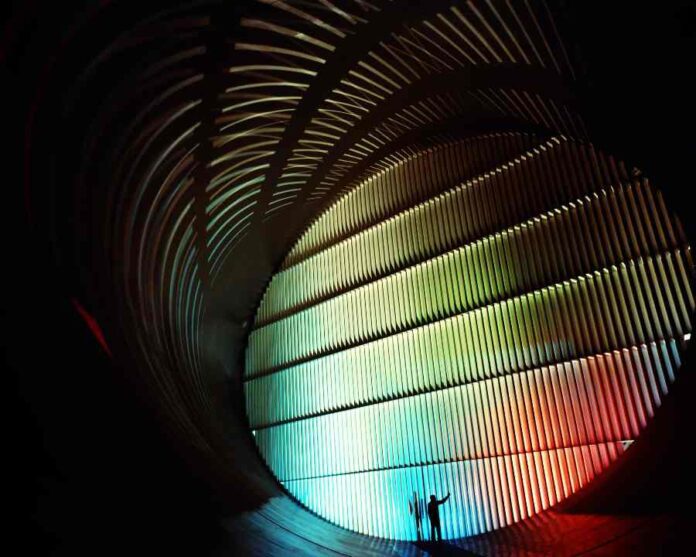Flying cars. Space tourism. Safe reentry for astronauts coming back from Mars.
These technologies are still science fiction, but some won’t be for much longer, according to Charles “Mike” Fremaux, NASA Langley Research Center’s chief engineer for intelligent flight systems.
To test these concepts, particularly in regard to public and military safety, NASA Langley is building its first new wind tunnel in over 40 years. The NASA Flight Dynamic Research Facility, a project Fremaux has been pursuing for 25 years, will replace two smaller wind tunnels that are around 80 years old. The center’s most recent and largest, the National Transonic Facility, was built in 1980.
“These facilities are really kind of tailor-made for doing a lot of that work,” he said at a presentation at the Virginia Air & Space Science Center in Hampton on Tuesday. The talk was part of NASA Langley’s Sigma Series community lectures.
“That’s not our traditional wheelhouse. We haven’t tested anything with a propeller on it in decades.”
That’s because many new craft will depend on electric vertical takeoff and landing, or “eVTOL,” technology. With likely dozens or even hundreds of private vehicles in the airways, research is needed to understand how vehicles will react in real-world conditions.
Fremaux expects some of these technologies will likely be mainstream by 2040 or sooner.
The $43.2 million federal government contract to design and build the 25,000-square-foot facility went to BL Harbert International, a construction company based in Birmingham, Alabama. It is expected to open in early 2025.
The wind tunnel will be 130 feet tall, Fremaux said, comparing its capabilities to those it will replace: The 12-foot, Low-Speed Spin Tunnel built in 1939 and the 20-foot, Vertical Spin Tunnel built in 1940.
One project he worked on using the center’s other wind tunnels—there are currently around 16 operating, Fremaux said—was the Stardust Mission in 2006, the first spacecraft to bring back material from outside the moon’s orbit.
Without parachute technology developed at NASA Langley, it wouldn’t have been possible to recover samples from that mission, Fremaux said.
Now, along with testing the next generation of commercial, earthbound aviation, the Flight Dynamics Research Facility will provide experimental support for entry, descent and landing of missions returning from the moon and Mars, as well as exploration of Venus and Titan, a moon of Saturn.
The research will support human space exploration, contributing to the possibility of safe landing and reentry on a human mission to Mars.
The research will be similar to some NASA Langley has performed for nearly 100 years as public and private air traffic went from hard-to-imagine to hard-to-imagine-life-without, Fremaux said.
The tunnel will provide safeguards not just to the public, but for the technicians who work there.
“How are the models going to be launched and retrieved?” audience member Ronald Hermansderfer, 89, asked, referring to small, free-flying scale models.
“The plan is to do that just like we do now; a very skilled technician is going to launch the models by hand. That’s not a joke,” Fremaux said to murmurs from the audience. “That’s true, and we have one right here, now retired, who did it for many years. So I know that was a loaded question.”
Fremaux recognized Hermansderfer, who worked at the center as a technician from 1983 to 2002. Hermansderfer’s job was dangerous; if someone opened the wrong door elsewhere in the facility, affecting the pressure differential, a technician could be sucked into the wind tunnel while launching a model.
The new system will have a pressure equalization system, Fremaux said.
After the talk, Hermansderfer said that, as a kid, he used to set paper airplanes on fire and throw them out of windows. He did something remarkably similar in the testing tunnels at Langley. But it never really occurred to him he was in danger.
His son—also named Ronald Hermansderfer and also retired from NASA Langley—laughed.
“Maybe they just didn’t tell you,” he said.
